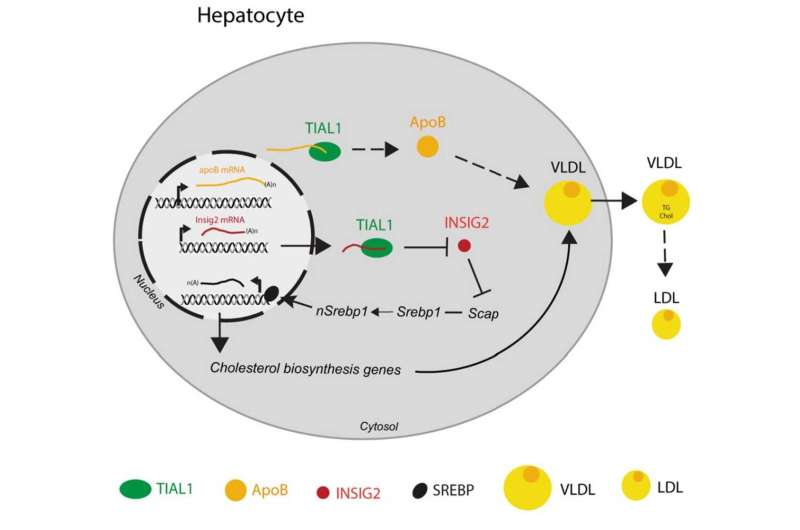This article has been reviewed according to Science X's editorial process and policies. Editors have highlighted the following attributes while ensuring the content's credibility:
fact-checked
peer-reviewed publication
proofread
Researchers develop viP-CLIP method for identifying protein networks in tissues

A recent Nature Communications paper by the Stoffel group (IMHS) in collaboration with the Tuschl and Chao labs reports the development of viP-CLIP, a method capable of identifying RBP networks in tissues, and the identification a novel factor implicated in regulation of cholesterol biosynthesis.
RNA-binding proteins (RBPs) are proteins that bind to double or single stranded RNAs in cells and have important roles in cellular function, transport and localization. System-wide cross-linking and immunoprecipitation (CLIP) approaches have unveiled regulatory mechanisms of RBPs mainly in cultured cells due to limitations in the cross-linking efficiency of tissues.
Researchers at IMHS developed viP-CLIP (in vivo PAR-CLIP), a method capable of identifying RBP targets in mammalian tissues, thereby facilitating the functional analysis of RBP-regulatory networks in vivo. By applying viP-CLIP to mouse livers, the investigators identified Insig2 and ApoB as prominent TIAL1 target transcripts, indicating an important role of TIAL1 in cholesterol synthesis and secretion. The functional relevance of these targets was confirmed by showing that TIAL1 influences their translation in hepatocytes. Mutant Tial1 mice exhibit altered cholesterol synthesis, APOB secretion and plasma cholesterol levels.
The study demonstrates that viP-CLIP can identity physiologically relevant RBP targets by identifying a previously unrecognized factor implicated in the negative feedback regulation of cholesterol biosynthesis.
More information: Hasan Vatandaslar et al, In vivo PAR-CLIP (viP-CLIP) of liver TIAL1 unveils targets regulating cholesterol synthesis and secretion, Nature Communications (2023). DOI: 10.1038/s41467-023-39135-8
Journal information: Nature Communications
Provided by Eidgenössische Technische Hochschule Zürich




















